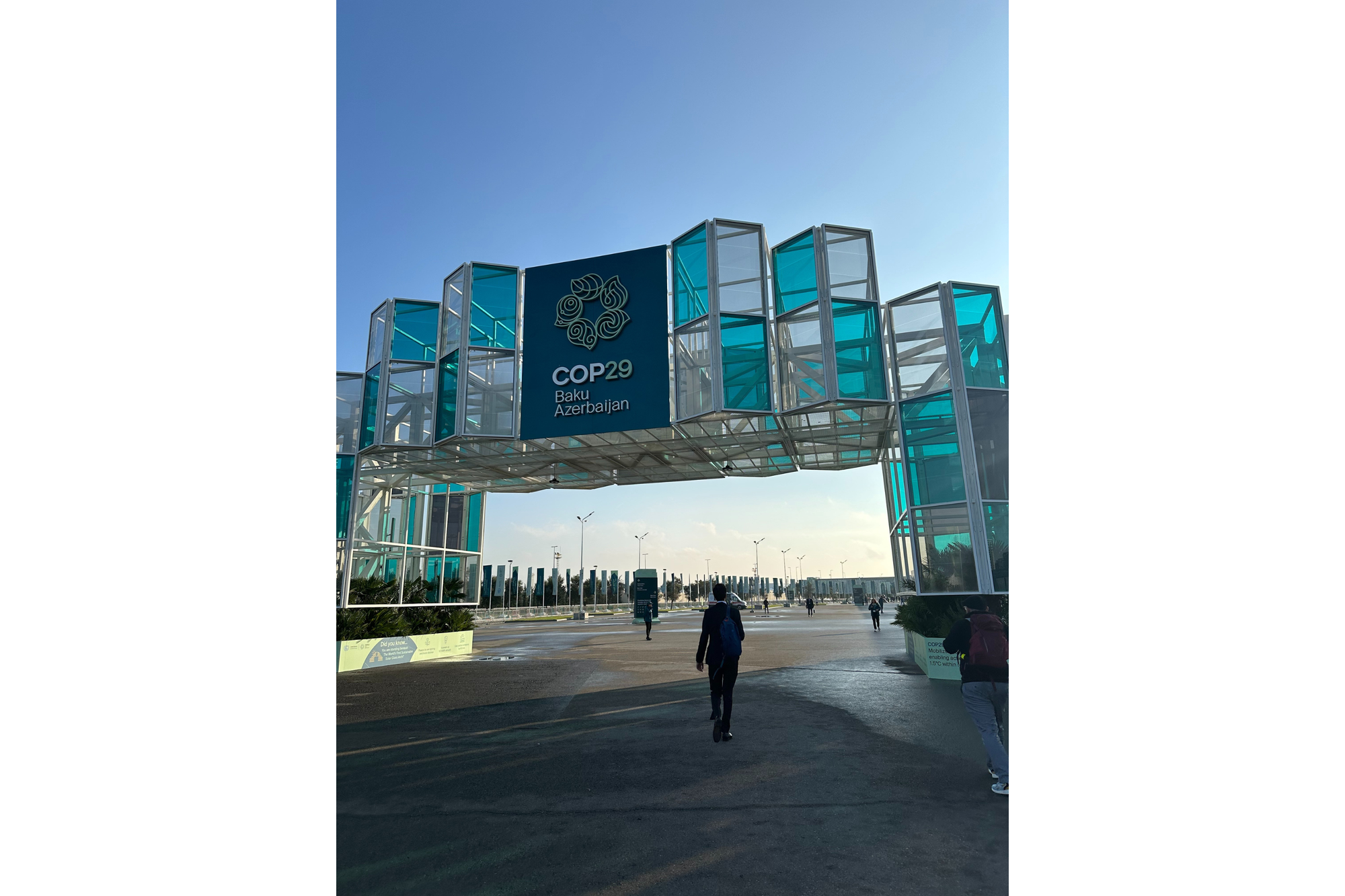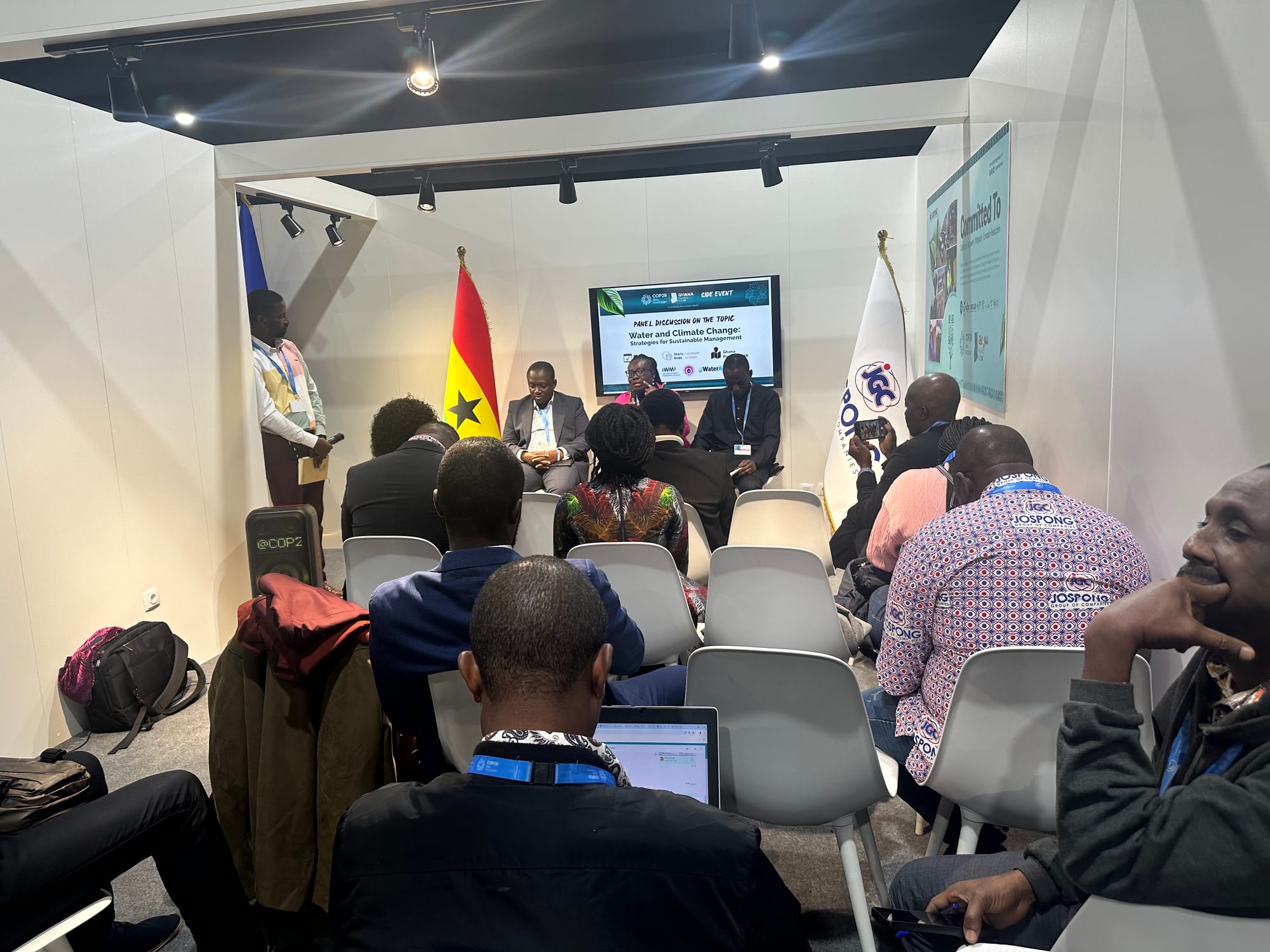Community Voices ⎸ Climate change makes water insecurity worse in the Global South
Without the money and resources that the Global North has, countries in the Global South are not able to adapt to or fight back against the impacts of climate change.

This piece is part of Project Optimist's student and community reporting program in central Minnesota. A group of students conducted field reporting at the COP29 conference in Baku, Azerbaijan, and wrote columns that highlight their research. Molly Tenenbaum is a senior at the College of St. Benedict and St. John’s University. A native of Los Angeles, Calif., Tenenbaum is majoring in environmental studies.
Countries in the Global South are hit the hardest by climate change. Officials have been doing what they can to adapt to water insecurity, but they say it is not enough.
Water scarcity affects nearly two-thirds of the world’s population, killing 3.5 million people each year who don’t have enough clean water. Without the money and resources that the Global North has, countries in the Global South are not able to adapt to or fight back against the impacts of climate change.
Sign up for Project Optimist's newsletter
Solution-focused news, local art, community conversations
It's free. No spam. Unsubscribe anytime.
Rising temperatures caused by climate change lead to greater evaporation of water into the atmosphere. Simultaneously, warmer air holds more moisture than colder air. As such, dry spells are lengthy, and rainfall is infrequent and severe, which causes flooding and droughts. Long periods of drought mean that when the occasional extreme storm does come, sediment and pollutants, such as chemical fertilizers, run off into the water, which makes it unsafe to drink. Higher water levels and intense rainfall and storms lead to high rates of erosion, and therefore increased sedimentation, which pollutes the water as well.
Both water scarcity and water excess are incredibly impactful in the Global South. Whereas countries in the Global North have enough money to build infrastructure to sanitize water and prepare for water instability and uncertainty, countries in the Global South are often caught unprepared, their health and livelihoods constantly at risk.

Zambia is currently in the midst of a drought that is worse than they have seen in over four decades, said Philippa Hamakasu, the senior green economy officer at Zambia’s Ministry of Green Economy and Environment, in an interview at the United Nations Framework Convention on Climate Change 29th Conference of Parties (COP) in Baku, Azerbaijan.
Lack of water is a lack of food for countries such as Zambia that are almost completely dependent on rainfall for agricultural irrigation, said Fungai Musana, chief external engagement officer at the World Wide Fund for Nature in Zambia. Over 50% of people in Zambia are going hungry due to the drought’s effects, Musana said.
Furthermore, most of Zambia’s energy is hydropower. The extreme droughts in Zambia have forced officials to construct more coal power plants, a less sustainable, but more reliable energy source.
Zambia’s occasional rainfall events are so severe that they degrade ecosystems, simultaneously polluting the water with sediment. As a result, Musana said Zambia has implemented check dams – barriers placed intermittently throughout ditches and other water channels to slow the flow of stormwater and reduce erosion.
 Project OptimistMair Allen
Project OptimistMair Allen
However, rain storms in Zambia often sweep away the check dams, Hamakasu said. Funding would allow officials to introduce more effective techniques, such as water harvesting, that wealthier countries have already implemented.
Uzbekistan’s water insecurity is similarly troubling. Over 58% of Uzbekistan’s land area is used for agriculture, so much of its water supply goes toward agriculture. Charles Norman, the Partner Relations and Climate Resilience Lead at the Ministry of Ecology, Environmental Protection and Climate Change in Uzbekistan, works on numerous projects centered around climate smart agriculture, including improving irrigation systems and farming methods, as well as using more drought resilient crops.

Speaking during an interview at COP29, Norman said the government has built dams to improve flood resilience. However, Norman said their efforts are not making enough of a difference and officials need to take steps to intervene on the smaller, federal scale. Yet due to limited resources, officials in Uzbekistan’s government often will not invest in improved water systems unless the measures help all of Central Asia. As a result, communities remain water insecure despite the many agricultural and irrigation improvements the country is making.
While we enjoy our seemingly endless flow of water in the Global North, it is important to remember how fortunate we are and think about the majority of people around the world who struggle with water insecurity every day, both in times of water scarcity and excess. People in the Global South are no less knowledgeable or deserving of clean, potable water than anyone else. Their struggles are not caused by their actions. Even now, countries in the Global South emit minimal amounts of greenhouse gases and contribute little to climate change compared to the Global North. People in the Global South reap the consequences of decades of industrialization and environmental harm committed by the Global North. Women are especially impacted by water insecurity, as it is their responsibility to provide water for their families.
By listening to and amplifying the voices of people in the Global South, we can increase awareness and spur action to help people who are struggling with water due to our actions.

This column was edited and fact-checked by Jen Zettel-Vandenhouten.
